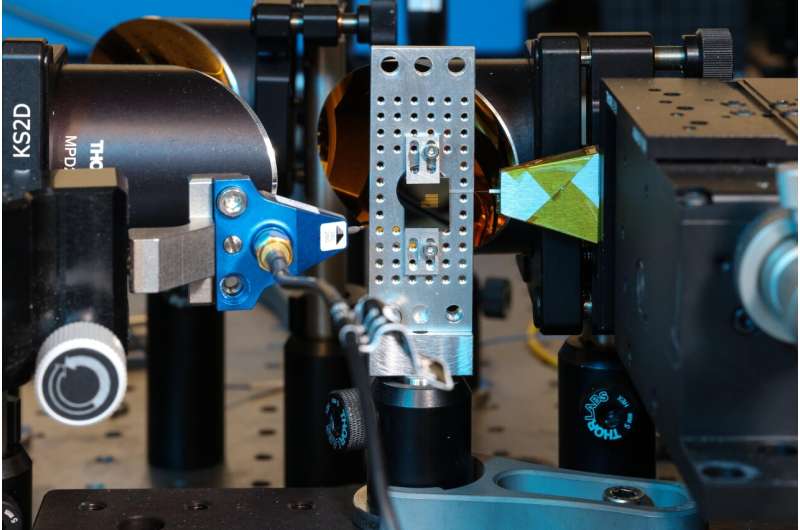Engineered by researchers at EPFL and Harvard, a compact chip enables two-way conversion between terahertz and optical signals—setting the stage in 6G communications, radar, and ultrafast computing.

In an advancement that could reshape future communication and sensing systems, researchers at EPFL and Harvard University have unveiled a hybrid chip that achieves real-time, two-way conversion between terahertz (THz) and optical signals—on a single, compact device. Terahertz radiation occupies the spectral space between microwaves and infrared light, and is capable of ultra-high data transmission speeds. However, its integration into mainstream optical and microwave-based systems has long been a challenge due to its unique frequency and signal characteristics. Now, a new chip engineered using thin-film lithium niobate has made that interface possible.
The innovation builds on earlier work by EPFL’s Laboratory of Hybrid Photonics, where researchers demonstrated THz wave generation from a lithium niobate photonic chip. The latest development adds the capability to detect incoming THz waves by converting them into optical signals—completing the loop and enabling full bidirectional functionality. The chip uses embedded transmission lines—micron-sized conductive paths—to guide THz waves like radio cables across the chip. Optical waveguides are placed nearby to facilitate efficient energy transfer with minimal signal loss. The ability to handle both THz and optical pulses on the same platform gives us unprecedented control and bandwidth.
This advance paves the way for terahertz-based radar capable of millimeter-precision distance measurement, as well as applications in 6G networks, spectroscopy, and autonomous vehicle sensors. Compact, power-efficient, and compatible with existing photonic infrastructure, the chip is designed for seamless integration into next-gen communication and sensing technologies. The hybrid design we’ve demonstrated could become foundational for future 6G systems where sensing and communications converge. With thin-film lithium niobate proving itself as a next-gen photonic platform, this work marks a critical step toward unlocking the largely untapped potential of the terahertz domain.
“This is the first time THz pulses have been detected on a lithium niobate photonic chip,” said Cristina Benea-Chelmus, who leads the EPFL lab. “We also achieved electric fields over 100x stronger and extended bandwidth from 680 GHz to 3.5 THz.”

